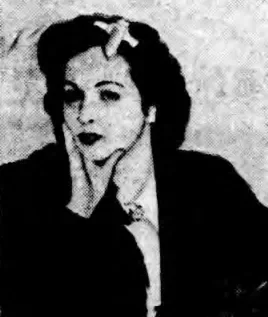The Passion of Miss de Marco, Unemployed Stenographer is an interdisciplinary theater work, incorporating elements from opera, musical theater, oratorio, dance, straight play and fine art to tell the story of a young, queer woman in 1930s New York and her brush with media fame before her untimely death.
The narrative is based on the actual news coverage of Norma de Marco’s injury during an armed robbery of a queer club in the East Village, where she intervened, saving the life of a police officer, receiving a blow to the head with a pistol for her trouble. The head injury was later found to be the likely source of her presumed-suicide the following evening, though many other factors were also at play.
A modern take on the Greek chorus, reading actual headlines and news articles about the events as they unfolded, propels the story, interspersed scenes from the last three months of Norma’s life. Based on historical documentation from her life, the show follows her introduction to the queer scene by her uptown girlfriend, the robbery and its aftermath, plus the media debacle that followed her untimely death.
Structured as a queer lives-of-the-saints style play, Norma is ultimately a reflection on how well we can ever truly know a historical figure from outside sources, and questions what we actually know about queer icons from the past and their lives.
ARTIST STATEMENT
The current revival of Cabaret on Broadway is testament to the ongoing cultural fascination with Berlin’s pre-war cabaret scene. Shows like Cabaret and Babylon Berlin are examples of how queer pre-war Berlin has dominated the past century of queer history in the performing arts, and it’s not hard to understand why. The political landscape of 1920s Germany led to fascinating descriptions of Berlin Kabarett, ranging from “the pinnacle of queerness” to “Babylon is fallen,” depending on the political stance of the speaker.
By contrast, New York City’s queer pre-war history has remained secret – even today still only really broadly known primarily by scholars despite books like Gay New York (George Chauncy). The lavender scare—which Sen. McCarthy might have considered a happy accident of his anti-communist agenda—was wildly successful in suppressing pre-war queer culture in the US. The cold war zeitgeist was such that having a ‘bachelor uncle with a roommate’ or a ‘spinster aunt with a special friend’ was a genuine threat to their families. Letters were burned, pictures hidden away, and piece by piece, an entire movement disappeared.
Further, the cultural fascination with pre-war queerness that does exist has focused primarily on gay/queer male experiences in the context of straight women—e.g., women of the Cabaret movie/musical are straight-coded—with very little focus on lesbian/queer female lives. Texts like Stone Butch Blues (Leslie Feinberg) or A Queer New York (Jen Jack Geiseking), while notable, still chronicle a post-war experience of queer-fem culture. Yet, not only is there evidence that a fem-centric queer culture existed in NYC, historical study and period ephemera suggest that it was far deeper and richer than we might suppose.
Enter the Howdy Club (also interchangeably Club Howdy and the Howdy Revue), the longest standing queer/lesbian club in NYC – opened circa 1933, it managed to remain in business through 1944, despite Mayor LaGuardia’s moral crackdown on anything that might lead wide-eyed country boy GIs astray. During its existence, Club Howdy was a hotbed for drag, burlesque and queer art – a place where many famous entertainers got their start, including Gypsy Rose Lee.
Club Howdy forms the backdrop of Passion, recreating the gritty, slightly questionable locale filled with little touches to intimate glamor and excitement, in which pre-war queer folk had to negotiate their identities and relationships. As World War 2 began, fears around degeneracy and immorality forced once-openly queer establishments to places like the Village, and many could only find rental spaces that were controlled by organized crime. In that climate, clubs like Howdy were limited to very specific areas and could be shut down at a moment’s notice on the police commissioner or mayor’s whim.
The heart of the show is wrapped around the question of how media (in all its forms) shapes our understanding of the past and how well we can ever know historic icons. Passion, however, also explores the ways in which soi-disant “high art” / “low art” are used socially to establish normals, legitimacy and cultural ideas of “appropriateness.” Through the use of popular music styles of the 30’s (bring authenticity to the club scenes, in particular) alongside traditional, liturgical and classical styles of choral and vocal music, Passion purposefully uses the class implications around classical music to elevate the queer narratives of the protagonist and her friends/lover.



